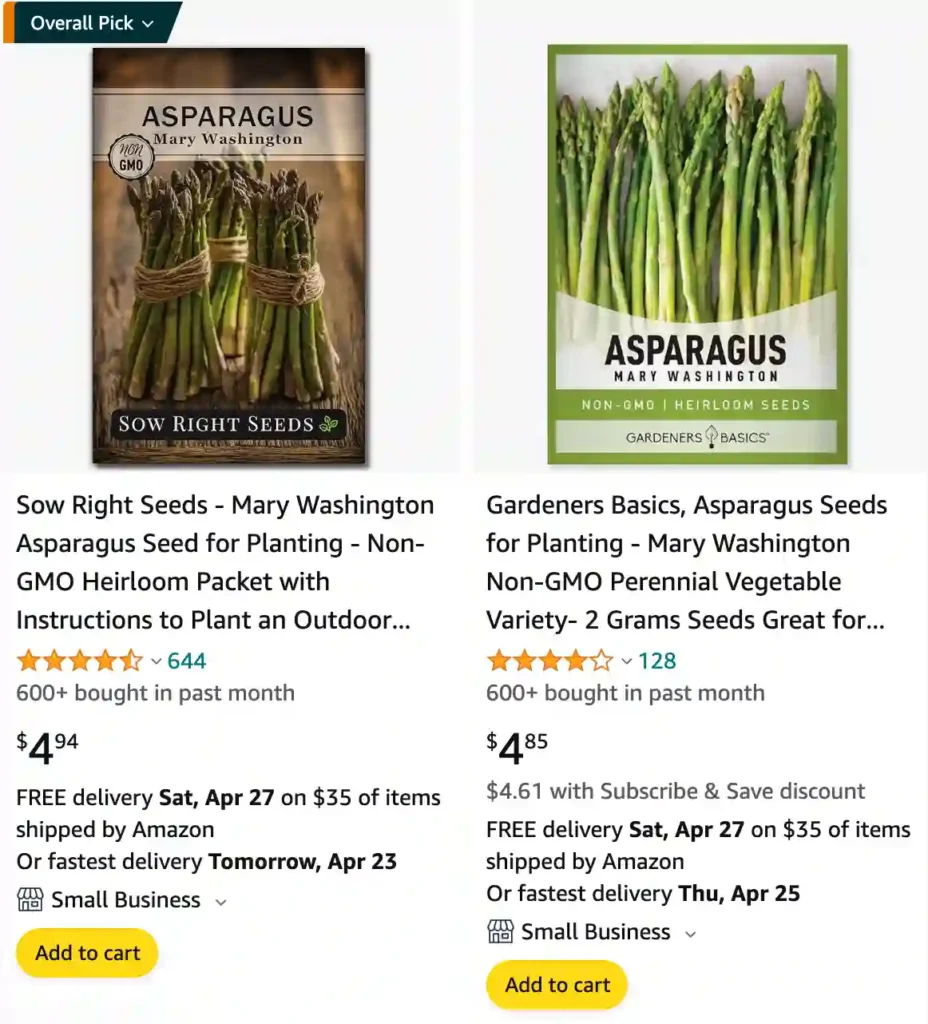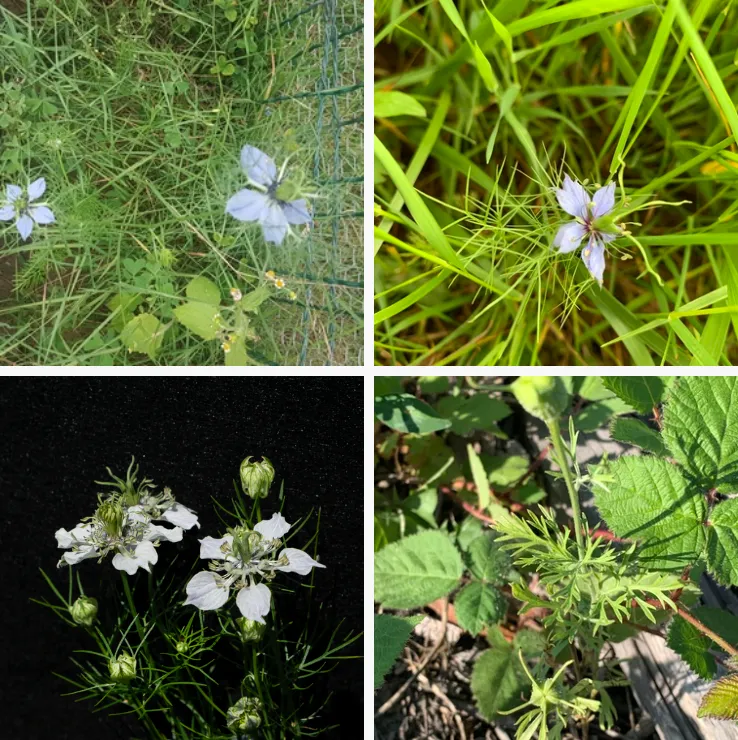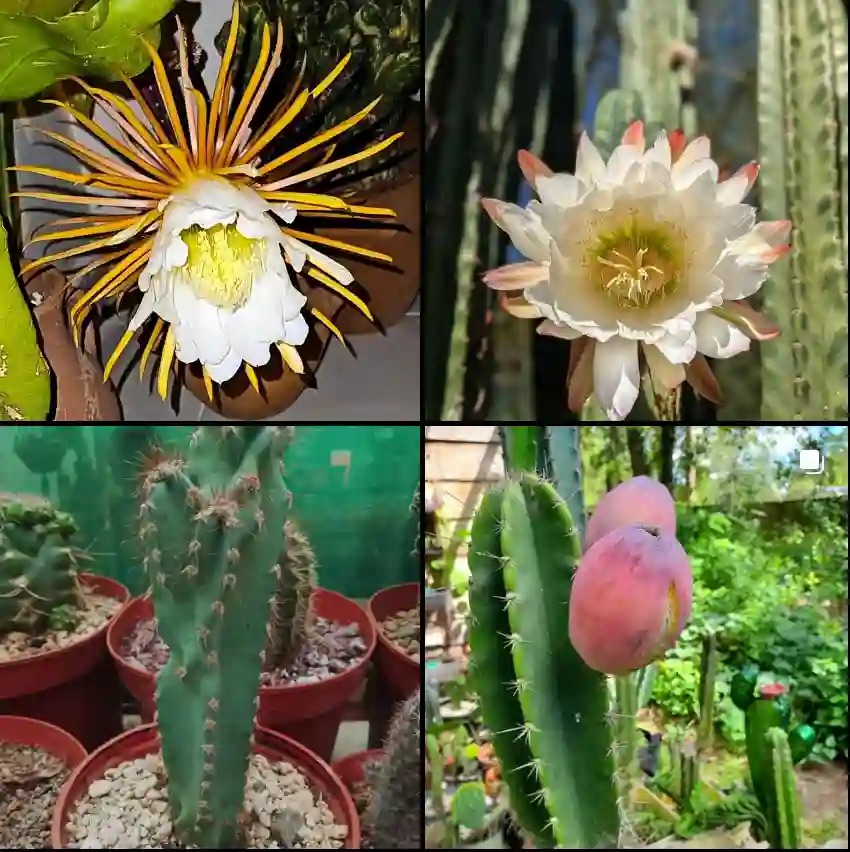
September 1 – Asparagus
"Asparagus, the versatile spear, defines September 1."
Asparagus symbolizes prosperity and resilience. You thrive in various environments, embodying strength and abundance. Like its enduring growth, you are a source of vitality.
More Than Just a Delicious Spear: Exploring the Asparagus Genus
Hi, I’m Ferb Vu, and while you might know me best for my engineering feats, I have a secret passion: botany. Today, I want to share my fascination with a genus of plants that’s more than just a tasty spring vegetable: Asparagus from the Asparagaceae family.
Yes, that’s right, the same asparagus you enjoy on your dinner plate belongs to a diverse and fascinating genus with over 200 species! While Asparagus officinalis, the garden asparagus, is the star of the culinary world, its relatives exhibit a remarkable range of forms and adaptations. From delicate ferns to climbing vines, the Asparagus genus has it all.
Asparagus vs Asparagus Fern
Asparagus for eating definitely wins out over the asparagus fern – Plant FAQs: Asparagus Fern – A. Densiflorus, A. Setaceus, A. Retrofractus, A. Sprengeri, which, though beautiful, doesn’t quite satisfy my culinary cravings!
Asparagus Species
- Asparagus acicularis F.T.Wang & S.C.Chen
- Asparagus acocksii Jessop
- Asparagus acutifolius L.
- Asparagus adscendens Roxb.
- Asparagus aethiopicus L. Plant FAQs: Asparagus Aethiopicus – Sprenger’s Asparagus Fern
- Asparagus africanus Lam.
- Asparagus aggregatus (Oberm.) Fellingham & N.L.Mey.
- Asparagus albus L.
- Asparagus alopecurus (Oberm.) Malcomber & Sebsebe
- Asparagus altiscandens Engl. & Gilg
- Asparagus altissimus Munby
- Asparagus angulofractus Iljin
- Asparagus angusticladus (Jessop) J.-P.Lebrun & Stork
- Asparagus aphyllus L.
- Asparagus arborescens Willd. ex Schult. & Schult.f.
- Asparagus aridicola Sebsebe
- Asparagus asiaticus L.
- Asparagus asparagoides (L.) Druce Plant FAQs: Asparagus Asparagoides – Bridal Creeper
- Asparagus aspergillus Jessop
- Asparagus azerbaijanensis Hamdi & Assadi
- Asparagus baumii Engl. & Gilg
- Asparagus bayeri (Oberm.) Fellingham & N.L.Mey.
- Asparagus benguellensis Baker
- Asparagus biflorus (Oberm.) Fellingham & N.L.Mey.
- Asparagus biradarii (Kamble) Kottaim.
- Asparagus botschantzevii Vlassova
- Asparagus botswanicus Sebsebe
- Asparagus brachiatus Thulin
- Asparagus brachyphyllus Turcz.
- Asparagus breslerianus Schult. & Schult.f.
- Asparagus buchananii Baker
- Asparagus bucharicus Iljin
- Asparagus burchellii Baker
- Asparagus burjaticus Peschkova
- Asparagus calcicola H.Perrier
- Asparagus capensis L.
- Asparagus capitatus Baker
- Asparagus chimanimanensis Sebsebe
- Asparagus clareae (Oberm.) Fellingham & N.L.Mey.
- Asparagus cochinchinensis (Lour.) Merr.
- Asparagus coddii (Oberm.) Fellingham & N.L.Mey.
- Asparagus concinnus (Baker) Kies
- Asparagus confertus K.Krause
- Asparagus consanguineus (Kunth) Baker
- Asparagus coodei P.H.Davis
- Asparagus crassicladus Jessop
- Asparagus curillus Buch.-Ham. ex Roxb.
- Asparagus dauricus Fisch. ex Link
- Asparagus declinatus L.
- Asparagus deflexus Baker
- Asparagus densiflorus (Kunth) Jessop Plant FAQs: Foxtail Fern – Asparagus Densiflorus
- Asparagus denudatus (Kunth) Baker
- Asparagus devenishii (Oberm.) Fellingham & N.L.Mey.
- Asparagus divaricatus (Oberm.) Fellingham & N.L.Mey.
- Asparagus drepanophyllus Welw. ex Baker
- Asparagus duchesnei L.Linden
- Asparagus dumosus Baker
- Asparagus edulis (Oberm.) J.-P.Lebrun & Stork
- Asparagus elephantinus S.M.Burrows
- Asparagus equisetoides Welw. ex Baker
- Asparagus exsertus (Oberm.) Fellingham & N.L.Mey.
- Asparagus exuvialis Burch.
- Asparagus falcatus L.
- Asparagus fallax Svent.
- Asparagus faulkneri Sebsebe
- Asparagus ferganensis Vved.
- Asparagus filicinus Buch.-Ham. ex D.Don
- Asparagus filicladus (Oberm.) Fellingham & N.L.Mey.
- Asparagus filifolius Bertol.
- Asparagus flagellaris (Kunth) Baker
- Asparagus flavicaulis (Oberm.) Fellingham & N.L.Mey.
- Asparagus fouriei (Oberm.) Fellingham & N.L.Mey.
- Asparagus fractiflexus (Oberm.) Fellingham & N.L.Mey.
- Asparagus fysonii J.F.Macbr.
- Asparagus gharoensis Blatt.
- Asparagus glaucus Kies
- Asparagus gobicus N.A.Ivanova ex Grubov
- Asparagus gonoclados Baker
- Asparagus graniticus (Oberm.) Fellingham & N.L.Mey.
- Asparagus greveanus H.Perrier
- Asparagus griffithii Baker
- Asparagus gypsaceus Vved.
- Asparagus hajrae Kamble
- Asparagus hirsutus S.M.Burrows
- Asparagus horridus L.
- Asparagus humilis Engl.
- Asparagus inderiensis Blum ex Ledeb.
- Asparagus intricatus (Oberm.) Fellingham & N.L.Mey.
- Asparagus juniperoides Engl.
- Asparagus kansuensis F.T.Wang & Tang ex S.C.Chen
- Asparagus karthikeyanii (Kamble) M.R.Almeida
- Asparagus katangensis De Wild. & T.Durand
- Asparagus khorasanensis Hamdi & Assadi
- Asparagus kiusianus Makino
- Asparagus kraussianus (Kunth) J.F.Macbr.
- Asparagus krebsianus (Kunth) Jessop
- Asparagus laevissimus Steud. ex Baker
- Asparagus laricinus Burch.
- Asparagus lecardii De Wild.
- Asparagus ledebourii Miscz.
- Asparagus leptocladodius Chiov.
- Asparagus lignosus Burm.f.
- Asparagus longicladus N.E.Br.
- Asparagus longiflorus Franch.
- Asparagus longipes Baker
- Asparagus lycaonicus P.H.Davis
- Asparagus lycicus P.H.Davis
- Asparagus lycopodineus (Baker) F.T.Wang & Tang
- Asparagus lynetteae (Oberm.) Fellingham & N.L.Mey.
- Asparagus macowanii Baker
- Asparagus macrorrhizus Pedrol, J.J.Regalado & López Encina
- Asparagus madecassus H.Perrier
- Asparagus mahafalensis H.Perrier
- Asparagus mairei H.Lév.
- Asparagus mariae (Oberm.) Fellingham & N.L.Mey.
- Asparagus maritimus (L.) Mill.
- Asparagus meioclados H.Lév.
- Asparagus merkeri K.Krause
- Asparagus microraphis (Kunth) Baker
- Asparagus migeodii Sebsebe
- Asparagus minutiflorus (Kunth) Baker
- Asparagus mollis (Oberm.) Fellingham & N.L.Mey.
- Asparagus monophyllus Baker
- Asparagus mozambicus Kunth
- Asparagus mucronatus Jessop
- Asparagus multituberosus R.A.Dyer
- Asparagus munitus F.T.Wang & S.C.Chen
- Asparagus myriacanthus F.T.Wang & S.C.Chen
- Asparagus natalensis (Baker) J.-P.Lebrun & Stork
- Asparagus neglectus Kar. & Kir.
- Asparagus nelsii Schinz
- Asparagus nesiotes Svent.
- Asparagus nodulosus (Oberm.) J.-P.Lebrun & Stork
- Asparagus officinalis L.
- Asparagus oligoclonos Maxim.
- Asparagus oliveri (Oberm.) Fellingham & N.L.Mey.
- Asparagus ovatus T.M.Salter
- Asparagus oxyacanthus Baker
- Asparagus pachyrrhizus N.A.Ivanova ex N.V.Vlassova
- Asparagus palaestinus Baker
- Asparagus pallasii Miscz.
- Asparagus pastorianus Webb & Berthel.
- Asparagus pearsonii Kies
- Asparagus pendulus (Oberm.) J.-P.Lebrun & Stork
- Asparagus penicillatus H.Hara
- Asparagus persicus Baker
- Asparagus petersianus Kunth
- Asparagus plocamoides Webb ex Svent.
- Asparagus poissonii H.Perrier
- Asparagus prostratus Dumort.
- Asparagus przewalskyi N.A.Ivanova ex Grubov & T.V.Egorova
- Asparagus pseudoscaber Grecescu
- Asparagus psilurus Welw. ex Baker
- Asparagus punjabensis J.L.Stewart
- Asparagus pygmaeus Makino
- Asparagus racemosus Willd. Plant FAQs: Asparagus Racemosus – Shatavari
- Asparagus radiatus Sebsebe
- Asparagus ramosissimus Baker
- Asparagus recurvispinus (Oberm.) Fellingham & N.L.Mey.
- Asparagus retrofractus L. Plant FAQs: Ming Fern – Asparagus Retrofractus
- Asparagus richardsiae Sebsebe
- Asparagus rigidus Jessop
- Asparagus ritschardii De Wild.
- Asparagus rogersii R.E.Fr.
- Asparagus rottleri Baker
- Asparagus rubicundus P.J.Bergius
- Asparagus rubricaulis (Kunth) Baker
- Asparagus sarmentosus L.
- Asparagus saundersiae Baker
- Asparagus scaberulus A.Rich.
- Asparagus scandens Thunb.
- Asparagus schoberioides Kunth
- Asparagus schroederi Engl.
- Asparagus schumanianus Schltr. ex H.Perrier
- Asparagus scoparius Lowe
- Asparagus sekukuniensis (Oberm.) Fellingham & N.L.Mey.
- Asparagus setaceus (Kunth) Jessop Plant FAQs: Asparagus Setaceus
- Asparagus sichuanicus S.C.Chen & D.Q.Liu
- Asparagus simulans Baker
- Asparagus spinescens Steud. ex Schult. & Schult.f.
- Asparagus squarrosus J.A.Schmidt
- Asparagus stellatus Baker
- Asparagus stipulaceus Lam.
- Asparagus striatus (L.f.) Thunb.
- Asparagus suaveolens Burch.
- Asparagus subfalcatus De Wild.
- Asparagus subscandens F.T.Wang & S.C.Chen
- Asparagus subulatus Thunb.
- Asparagus sylvicola S.M.Burrows
- Asparagus taliensis F.T.Wang & Tang ex S.C.Chen
- Asparagus tamariscinus N.A.Ivanova ex Grubov
- Asparagus tenuifolius Lam.
- Asparagus tibeticus F.T.Wang & S.C.Chen
- Asparagus touranensis Hamdi & Assadi
- Asparagus transvaalensis (Oberm.) Fellingham & N.L.Mey.
- Asparagus trichoclados (F.T.Wang & Tang) F.T.Wang & S.C.Chen
- Asparagus trichophyllus Bunge
- Asparagus turkestanicus Popov
- Asparagus uhligii K.Krause
- Asparagus umbellatus Link
- Asparagus umbellulatus Bresler
- Asparagus undulatus (L.f.) Thunb.
- Asparagus usambarensis Sebsebe
- Asparagus vaginellatus Bojer ex Baker
- Asparagus verticillatus L.
- Asparagus virgatus Baker
- Asparagus volubilis (L.f.) Thunb.
- Asparagus vvedenskyi Botsch.
- Asparagus yanbianensis S.C.Chen
- Asparagus yanyuanensis S.C.Chen
How to plant asparagus?
Asparagus has always seemed like such an interesting vegetable to grow, but I’ve been a bit hesitant to try because of how long it takes to establish before producing a harvest. That said, I’ve heard the payoff is worth it! Some of my friends have had great success so I’m tempted to give it a go. I’ve been thinking of dedicating a raised bed for my asparagus patch since they need well-draining soil, and those beds tend to have better drainage than in-ground areas in my yard. I’ll have to do some more research into the best time to plant in my area and exactly how to prepare the bed. I know I’ll need lots of compost to work into the soil!
When to plant asparagus?
In my experience, the best time to plant asparagus is in early spring, as soon as the soil can be worked and temperatures start to warm up. This typically falls between March and May in many regions, depending on your local climate. Planting asparagus crowns early in the season gives them ample time to establish strong root systems before the hot summer weather arrives. It’s important to choose a sunny location with well-draining soil for your asparagus bed to ensure optimal growth. With proper care and patience, you can look forward to harvesting fresh asparagus spears for many years to come.
What does an asparagus plant look like?
An asparagus plant has a few different looks depending on the stage of its life:
- Young Spears: This is the part we eat! They emerge from the soil in spring as thick, green or purple stalks with tightly closed tips.
- Mature Ferns: If you let the spears keep growing, they transform into tall, feathery ferns that can reach several feet high. These ferns are essential—they make the food that fuels the plant and builds up energy stores in the roots for the next year’s harvest.
- Underground Crown: This is the heart of the asparagus plant, hidden below the soil. It’s a thick, fleshy structure that looks a bit like an octopus with lots of roots extending from it. From the crown, both the tasty spears and the tall ferns develop.
How many asparagus plants per person?
The number of asparagus plants per person really depends on how much asparagus you and your family like to eat! If asparagus is an occasional treat, I’d probably start with around five plants per person. However, if you’re like me and could happily eat it multiple times a week during harvest season, I’d bump that up to 10 or even 15 plants per person. Remember, established asparagus plants can produce for many years, so it’s worth considering your future enjoyment when making this decision.
How deep to plant asparagus crowns?
Asparagus crowns need to be planted fairly deep for a couple of reasons. First, it helps protect them from harsh winter weather (if that’s a concern in your area) and summer heat. Plus, it gives you a bit of wiggle room for weeding the asparagus bed without disturbing the roots. I’d aim for a depth of about 6 to 8 inches. You’ll start with the crowns at the bottom of the trench and gradually fill it in with soil as the asparagus spears grow and establish themselves.
How far apart to plant asparagus?
Giving asparagus plants enough room is really important – they like to spread out! I’d recommend planting them about 12 to 18 inches apart within the row. If you’re planning multiple rows of asparagus, it’s best to space those rows even further apart— around 3 feet would be ideal. It might seem like a lot of space at first, but established asparagus plants get quite bushy with their feathery ferns, so that extra space will fill in over time.
What to plant with asparagus?
Choosing companions for asparagus is so fun! I’ve heard great things about planting herbs like dill, cilantro, and basil nearby. They attract beneficial insects that help keep asparagus pests in check! Plus, I love having fresh herbs on hand when it’s time to cook up my asparagus harvest. Some people even plant flowers like marigolds and nasturtiums with their asparagus. These are known to deter harmful bugs, and they add a touch of beauty to the vegetable patch. I think I’ll definitely plant some colorful companions to make my asparagus bed even more inviting!
Can you plant asparagus in a pot?
Yes, you absolutely can plant asparagus in a pot, though it takes a little more attention than planting in the ground. The biggest challenge is finding a pot that’s large enough. Asparagus needs deep, loose soil to allow its root system to spread. It’s best to choose a pot that’s at least 18 inches deep and equally wide. I’d also be careful not to overcrowd the pot since asparagus plants will spread over time. While in-ground planting provides the best long-term solution, I might try growing a few plants in pots for the convenience and fun of it!
Can you plant asparagus in the fall?
While spring is the traditional asparagus planting season, fall planting can definitely work too! I’ve heard that doing it in the fall can even give your plants a head start as the warmer soil encourages good root development before winter hits. Of course, you’ll want to make sure you plant them well before the ground freezes. It’s also important to select a spot with great drainage, and add plenty of compost or well-rotted manure to enrich the soil. I’m thinking fall planting might be worth a try since it will give those asparagus crowns more time to get established for next year’s harvest.
Do asparagus plants spread?
Yes, asparagus plants do spread over time. They don’t spread in the way that, say, mint can take over a garden bed, but their underground crowns gradually expand and send up new shoots. This is why it’s important to give them plenty of space when planting. Some older types of asparagus will even produce seeds that can germinate and create new plants. If I want to maintain a neat and tidy asparagus bed, I’ll need to be vigilant about weeding out any unwanted seedlings, especially if I’m growing an heirloom variety.
When to transplant asparagus plants?
The best time to transplant asparagus depends on your climate and whether you prioritize a faster harvest or giving the plants the most time to establish. Here’s how I see it:
- Early Spring: This is a popular choice because the ground is thawed but not too hot. The asparagus can establish some roots before summer heat arrives. However, you might lose some harvest this year.
- Fall: This is tempting for me because it gives the asparagus crowns a head start on root development before winter. They’ll be stronger for next spring’s growth. The downside is that you’ll need to be extra careful about planting before the ground freezes and ensuring good drainage over winter.
Since I’m new to growing asparagus, I’m leaning towards transplanting in early spring. That way, I can learn the ropes and care for the plants throughout the growing season. But if I have any leftover crowns and fall comes early, I might just try transplanting a few then too – experiment for science!
Do deer eat asparagus plants?
Unfortunately, deer do sometimes eat asparagus plants. While asparagus might not be their first choice of snack, if deer are hungry or their preferred food sources are scarce, they won’t hesitate to nibble on your crop. They’re especially fond of the tender young spears that emerge in spring. I’ve heard that once the spears grow into the tall, feathery ferns, deer are slightly less interested. But to be on the safe side, I’ll definitely plan some protection for my asparagus patch, especially while it’s young and those delicious spears are in their prime!
When to plant asparagus in zone 7?
I’ve always had the best luck planting my asparagus in zone 7 in the early spring – around March and April. The ground has started to thaw, but there’s still a slight chill in the air. One year I tried planting later in the season, but the roots didn’t have enough time to establish themselves before the hot summer hit, and my harvest suffered.
When to plant asparagus in Georgia?
In Georgia, I’d also recommend planting your asparagus crowns in early spring, ideally in late February through March. You want to catch that window of time after the last frost, but before the summer heat sets in. I know a farmer down the road who always swears by planting his asparagus on St. Patrick’s Day, and his crop is always fantastic!
When to plant asparagus in NC?
North Carolina is just a hop over, so the best planting time would be pretty similar to Georgia. I’d say anytime in March is your safe bet to get your asparagus off to a good start. I spent a few summers working on a small organic farm in the Piedmont area, and that’s when we always planted our asparagus.
When to plant asparagus in PA?
Moving up to Pennsylvania, you’ll probably want to hold off a bit with planting compared to the southern states. Since you get colder winters, the ground takes longer to warm up. I’d advise planting sometime in April, once those consistent spring temperatures set in.
When to plant asparagus in Texas?
Texas has such varied climates; it depends on where you are! In northern Texas, early spring (March) would be best, kind of like Georgia. If you’re further south, where it warms up earlier, you could plant in February. I visited a friend’s ranch near San Antonio a few years back, and she already had her asparagus well-established by early March.
When to plant asparagus in Wisconsin?
Wisconsin winters can be brutal, so you’ll need to wait until the ground thaws and the risk of frost is past. I’d aim for planting in April, or even early May if the spring is running late. My cousin lives up near Green Bay, and she always says you should wait until you can work the soil comfortably before planting anything like asparagus.
When to plant asparagus in Indiana?
Indiana falls into that midwestern zone where April is usually your best time to plant asparagus. You want the soil workable without being too soggy and cold. One spring, I got impatient and planted too early – we got a late cold snap that really stressed the young plants.
When to plant asparagus in Missouri?
Missouri is pretty similar to Indiana with its planting window. I’d shoot for getting those asparagus crowns in the ground sometime in April. That gives them a chance to settle in before the heat of summer arrives. I’ve got some family out in Kansas City, and they always plant their garden around then.
When to plant asparagus in Oklahoma?
For Oklahoma, I’d recommend early spring planting, likely in March. But like Texas, the exact timing depends on your region. My sister used to live in Tulsa, and she said they could usually start planting a bit earlier there than folks in the panhandle where it stays colder longer.
Can you plant asparagus from the store?
While it’s technically possible to grow asparagus from store-bought stalks, it’s not the most reliable or efficient method. Here’s why:
- Variety Uncertainty: Store-bought asparagus often doesn’t specify the variety. Some asparagus varieties are better suited to certain climates, and some are primarily male plants (which produce more spears). You won’t know what you’re getting.
- Low Success Rate: The asparagus spears you buy are the edible parts of the plant. To grow a new plant, you need the roots (crowns). Store asparagus usually has the roots trimmed off. Even if you find some with roots, success isn’t guaranteed.
- Time Investment: Asparagus takes a few years to produce a good harvest, even when grown from healthy crowns. Growing from store-bought stalks might add another year or two to the waiting time.
Better Alternatives:
- Asparagus Crowns: These are the dormant roots of asparagus plants, specifically sold for planting. You can find them in nurseries or order them online. They offer a much higher success rate and a quicker path to harvest.
- Asparagus Seeds: You can start asparagus from seed. This takes a bit longer initially but allows you to choose from a wider range of varieties.
If you’re feeling adventurous:
You could try rooting store-bought stalks as a fun experiment! Just keep your expectations low and understand that it might not produce a strong, productive plant.
Where can i buy asparagus plants?
There are several places where you can purchase asparagus plants:
- Local Nurseries and Garden Centers: This is a great option for supporting local businesses and getting hands-on advice from knowledgeable staff. You can see the plants in person and pick the healthiest looking ones.
- Online Retailers: Online retailers offer a wider variety of asparagus cultivars and often have competitive prices.
- Farmer’s Markets: Some local farmers may sell asparagus crowns in the early spring. This is a great way to find fresh, locally-grown plants and support small-scale agriculture.
- Specialty Asparagus Growers: There are some nurseries and farms that specialize in asparagus production. You can often find a broader selection of varieties and quality crowns from these sources.
Important Note: Asparagus plants are typically sold as “crowns,” which are the dormant root systems.
How many asparagus plants per square foot?
When planting asparagus, you’ll want to plant one crown per square foot. This spacing allows enough room for the roots to spread out and develop a strong base over time, leading to a healthy and productive asparagus patch.
What plants look like asparagus?
Here are a few plants that might resemble asparagus:
- Horsetail (Equisetum): Horsetails have tall, segmented stems that look a bit like asparagus spears when young. However, horsetail has a much rougher texture and hollow, jointed stems.
- Pinedrops (Pterospora andromedea): This parasitic plant emerges with reddish stalks bearing small bell-shaped flowers, earning it the nickname “woodland asparagus.” However, this plant is not edible and has a very different lifecycle than true asparagus.
Can asparagus and strawberries be planted together?
Yes, asparagus and strawberries can be planted together as companion plants! Here’s why they make a good team:
- Different Root Zones: Asparagus has deep roots, while strawberries have shallow roots. This means they won’t compete for water or nutrients.
- Pest Deterrence: Some gardeners believe strawberries can help deter pests that bother asparagus, like asparagus beetles.
- Space Optimization: Interplanting these two crops lets you maximize your garden space. The strawberries will fill in the area around the asparagus plants.
- Extended Harvest: Strawberries bear fruit relatively quickly, while asparagus takes a few years to fully establish. Planting them together means you’ll get a harvest sooner while waiting for your asparagus bed to mature.
Things to Consider:
- Sunlight: Both asparagus and strawberries need full sun to thrive, so avoid overcrowding them as they mature.
- Maintenance: Strawberry plants spread through runners, which could encroach on your asparagus if not managed. Keep the strawberries trimmed back as needed.
Overall, planting asparagus and strawberries together can be a great way to increase your garden’s productivity and make the most of your space!
Can i plant beans with asparagus?
Unfortunately, beans are not ideal companion plants for asparagus. Here’s why:
- Competition for Nutrients: Both beans and asparagus are heavy feeders and will compete for the same nutrients in the soil. This can lead to stunted growth for both plants.
- Allelopathy: Beans can release substances into the soil that have an allelopathic effect, meaning they can inhibit the growth of nearby plants, including asparagus.
- Root Space: Beans have relatively shallow roots, but as your asparagus plants mature, their roots will spread out and compete for space in the soil.
Better Companions for Asparagus
Consider planting asparagus with companions like:
- Tomatoes
- Parsley
- Basil
- Marigolds
- Nasturtiums
- Strawberries
These plants can help deter asparagus pests, attract beneficial insects, and improve the overall health of your asparagus patch.
Can you plant onions with asparagus?
There’s a bit of debate on whether onions and asparagus make good companions. Here’s a breakdown of the arguments:
Why it’s NOT recommended:
- Nutrient Competition: Onions, like asparagus, are heavy feeders. Planting them together can cause them to compete for resources.
- Allelopathy: Members of the allium family (onions, garlic, chives, etc.) may release substances that can inhibit the growth of other plants, including asparagus.
- Root Disturbance: Asparagus has a long-term growth cycle, while onions are harvested annually. Digging up onions can disturb the delicate roots of asparagus plants.
Why some people DO plant them together:
- Pest Deterrence: The strong scent of onions might help deter some pests that bother asparagus, like asparagus beetles.
- Space Maximization: Short-season onions can be planted between young asparagus plants, utilizing space before the asparagus needs it fully.
Recommendation:
While you could try planting them together, it’s generally best to avoid it for optimal asparagus health and production. There are many other excellent companion plants for asparagus that don’t present the same risks.
Can you plant rhubarb and asparagus together?
Yes, rhubarb and asparagus are often considered excellent companion plants! Here’s why:
- Compatible Growth Patterns: Rhubarb and asparagus have complementary harvest seasons. Rhubarb is harvested in the spring, while asparagus spears are ready a bit later in the season. This allows you to enjoy a continuous yield from the same garden bed.
- Different Root Systems: Asparagus develops deep roots, while rhubarb has a shallower root system. This minimizes competition for nutrients and water.
- Pest Repellent: Some gardeners believe that rhubarb can help deter pests that might bother asparagus.
Considerations:
- Spacing: While a good match, make sure you provide enough space for both plants to reach full maturity. Rhubarb can grow quite large, so plant them far enough away from your asparagus crowns to avoid overcrowding.
- Similar Needs: Both rhubarb and asparagus prefer well-draining soil, full sun, and regular fertilization.
Overall, planting rhubarb and asparagus together is a classic companion planting combination that can benefit both plants and optimize the harvest from your garden!
Do you soak asparagus roots before planting?
Yes, it’s highly recommended to soak asparagus roots before planting. Here’s why:
- Rehydration: Asparagus crowns (the roots) can sometimes get a little dried out during transport and storage. Soaking them helps to rehydrate the roots, which promotes better establishment and faster growth once they’re in the ground.
- Stimulates Growth: Soaking can help “wake up” the dormant crowns, encouraging them to send out new roots and shoots more quickly.
- Improved Transplant Success: A well-hydrated plant handles the stress of transplanting better, increasing your chances of a successful asparagus bed.
How to Soak Asparagus Roots:
- Prepare Solution: Fill a bucket or container with cool water. You can add a teaspoon of liquid seaweed or compost tea for an extra nutrient boost (optional).
- Soak Crowns: Gently place your asparagus crowns into the water, making sure the roots are completely submerged.
- Soaking Time: Let them soak for about 1-2 hours, but no longer than 6 hours. Oversoaking can damage the roots.
After soaking, plant your asparagus crowns as soon as possible.
Asparagus vs Broccoli
I prefer the crisp, earthy taste of asparagus over the denser texture of broccoli, especially when lightly grilled.
White Asparagus vs Green
While green asparagus is my go-to for its vibrant flavor, white asparagus has a milder taste and slightly sweeter profile, making it a delightful alternative for dishes like creamy soups.
Asparagus vs Green Beans
I find green beans more versatile in cooking due to their tender texture and mild flavor, but asparagus brings a unique nuttiness that works perfectly in stir-fries and salads.
Asparagus Male vs Female
Male asparagus spears are thicker and less fibrous, making them easier to cook with and more enjoyable to eat compared to their thinner, sometimes tougher female counterparts.
Purple Asparagus vs Green
Purple asparagus adds a delightful hint of sweetness and a visually striking element to dishes, but I lean towards the classic green variety for its robust flavor and versatility.
Asparagus vs Brussels Sprouts
While Brussels sprouts offer a hearty, cabbage-like taste, I prefer the more delicate and distinct flavor of asparagus, whether roasted or sautéed with garlic.
Asparagus vs Broccolini
Broccolini’s mild broccoli flavor with a hint of sweetness makes it a great complement to meals, but asparagus wins me over with its uniquely crisp texture and slightly bitter edge.
Asparagus vs Celery
Celery’s refreshing crunch is unbeatable for snacking, but I find asparagus more flavorful and satisfying in recipes where its distinct taste can shine, like in pasta dishes or as a side.
Asparagus vs Spinach
Spinach is fantastic for its versatility in salads, smoothies, and cooked dishes, but I prefer the robust, slightly grassy flavor of asparagus when it’s in season and grilled with a touch of olive oil.
Wild Asparagus vs Asparagus
oraging for wild asparagus is a rewarding experience, offering spears with a more intense, wild flavor that enhances dishes in a way cultivated asparagus sometimes can’t match.
My Continued Fascination
As an engineer and a botany enthusiast, I’m constantly amazed by the ingenuity of nature. The Asparagus genus is a testament to the diversity and resilience of life on Earth. I encourage you to take a closer look at these fascinating plants the next time you encounter them, whether on your plate or in the wild.
If i die, water my plants!



